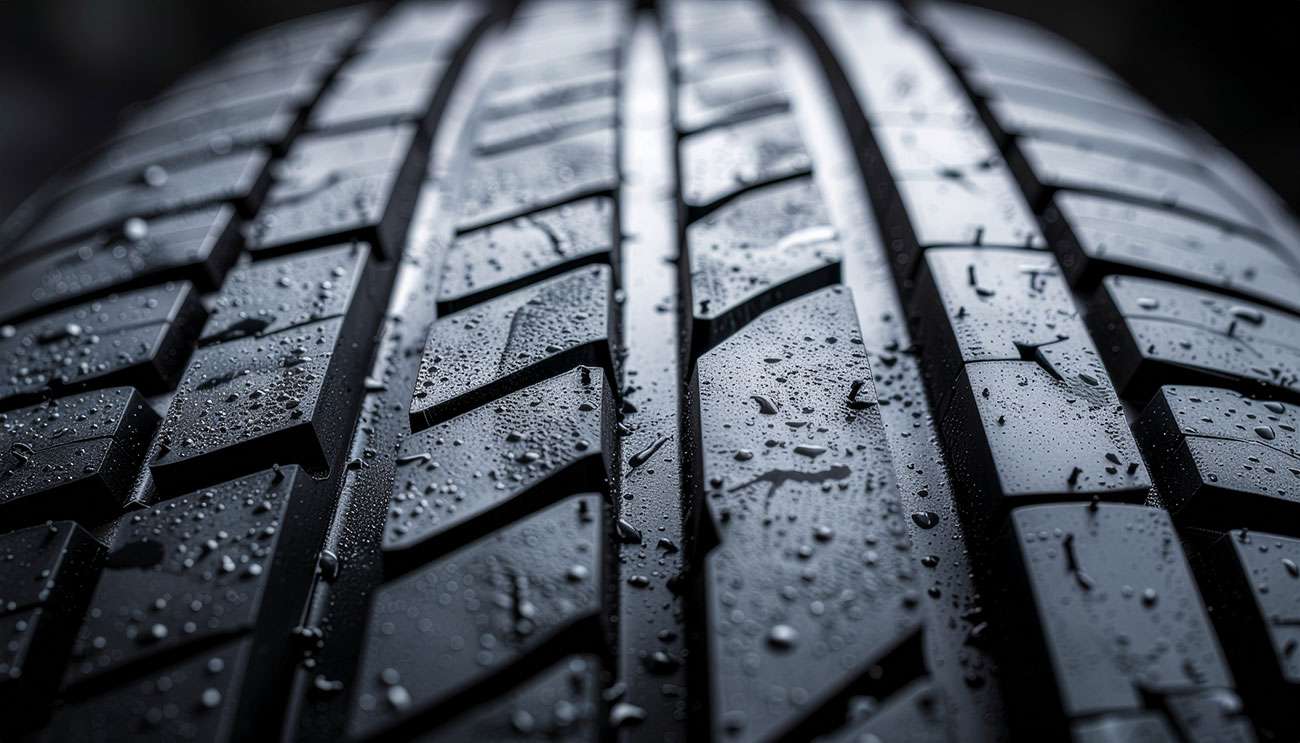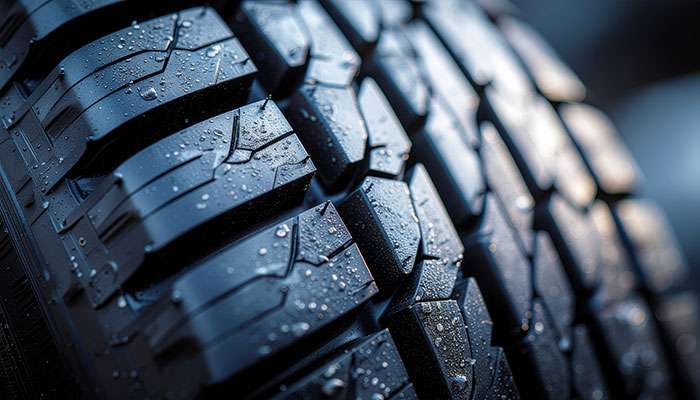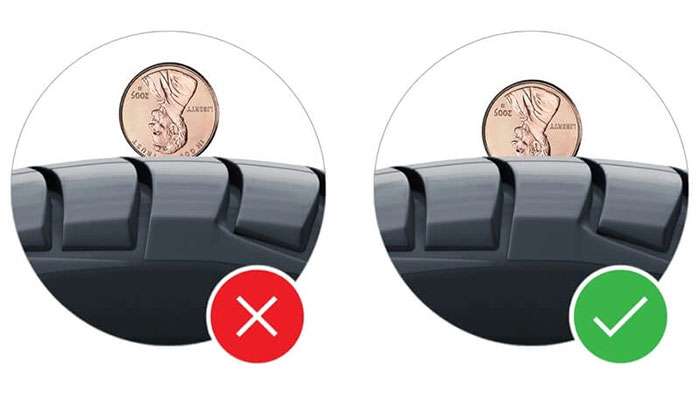
Drivers are three times more likely to be involved in a crash due to poor tire condition according to the National Highway Traffic Safety Association. Understanding how many miles do car tires last is essential for every vehicle owner's safety and budget planning.
We carry extensive knowledge about tire performance, and the facts are clear: car tires typically deliver about 50,000 miles of reliable service, though this varies considerably. High-quality all-season tires can easily provide between 55,000 to 85,000 miles when properly maintained. Tire manufacturers often back certain products with warranties as high as 80,000 miles, showing their confidence in longevity, but how long your car tires actually last depends on several critical factors.
Most drivers log between 12,000 to 15,000 miles each year, which means a quality set of tires should serve you well for three to five years. The actual lifespan of your tires will depend on your driving style, the roads you travel, and how well you care for them.
Our expert guide covers the factors that determine tire durability, proven methods to extend their life, and clear signs when it's time to replace them regardless of mileage.

The lifespan of your tires depends on what type you choose and how you drive. We'll break down what you can expect from different tire categories and show you the real performance data versus manufacturer promises.
Each tire type serves a specific purpose, and their durability reflects that design focus:
All-season tires deliver the longest service life at 50,000 to 70,000 miles, making them the best choice for most drivers. These tires handle various conditions without sacrificing durability.
Winter tires typically provide 20,000 to 40,000 miles of service. Their softer rubber compounds grip cold surfaces effectively but wear faster in warmer conditions.
Summer tires excel in warm weather but only last approximately 25,000 to 30,000 miles. Their harder compounds prioritize performance over longevity.
High-performance tires trade durability for maximum grip, lasting just 15,000 to 20,000 miles. These tires focus on handling and speed rather than mileage.
Tire manufacturers advertise warranties from 30,000 to 100,000 miles. Real-world testing tells a different story about actual performance.
Consumer Reports tested 47 tire models and found significant gaps between promises and reality. Kumho tires with 75,000-mile warranties lasted only 55,000 miles in testing. Continental tires with 90,000-mile warranties reached just 60,000 miles.
Some results were even more disappointing. Nokian tires with 80,000-mile warranties wore out at just 35,000 miles. However, certain brands exceeded expectations. Michelin consistently met or beat their warranty claims, while Pirelli P4 Four Seasons Plus tires with 90,000-mile warranties actually reached 100,000 miles in testing.
Passenger car tires typically last between 40,000 and 60,000 miles under normal conditions. Industry experts use 50,000 miles as the standard benchmark for replacement.
Consumer Reports' treadwear testing showed family-car tires can easily exceed 70,000 miles. Their testing revealed high-quality all-season tires lasting 55,000 to 85,000 miles.
Most drivers cover 12,000 to 15,000 miles per year, so tires should last three to five years. Your actual results will depend on driving habits, vehicle type, and maintenance practices.
Several critical factors determine how many miles your tires deliver beyond just the type you select. Understanding these variables helps you maximize your investment and avoid premature replacements.
Your driving style directly impacts tire longevity. Aggressive driving—rapid acceleration, hard braking, and sharp cornering—can reduce tire lifespan by up to 25%. High speeds generate excessive heat, causing premature wear. Research shows tire wear increases exponentially with vehicle speed. Extreme cornering places intense lateral force on tires, dramatically accelerating wear—urban driving with just 5% of distance driven can account for 63% of tire wear.
The surfaces you drive affect tire durability considerably. Currently, 43% of America's roadways are in poor or mediocre condition. One out of every three bridges in the United States needs repair. Rough, unpaved, rocky, or muddy roads accelerate wear rates, while potholes and road debris can cause structural damage.
Environmental conditions play a crucial role in tire performance. Hot weather softens rubber and expands air, potentially causing overinflation. Cold temperatures contract air (each 10°F drop reduces pressure by about 2 PSI) and harden rubber, reducing grip. Prolonged sun exposure causes rubber to dry out and crack, leading to complete tire deterioration.
Heavier vehicles naturally cause increased tire wear. Electric and hybrid cars may produce more tire wear due to their high instant torque at startup. Exceeding a vehicle's maximum weight rating weakens tires by increasing internal and external pressure.
Premium tires with higher treadwear ratings typically offer extended mileage. Manufacturers' warranties often reflect expected longevity—tires with 80,000-mile warranties versus 25,000-mile warranties generally last longer. Different tire types wear at varying rates: winter tires (with higher natural rubber content) wear faster in warm conditions, while summer tires with less natural rubber perform differently.

Image Source: Falken Tires
Proper maintenance can dramatically extend how many miles your car tires last. These proven practices will maximize your tire investment while keeping you safe on the road.
Correct tire pressure is critical for getting maximum mileage from your tires. Check pressure monthly when tires are "cold" (vehicle not driven for at least three hours). Underinflated tires create excessive heat and stress, leading to irregular wear patterns, while overinflated tires become vulnerable to damage from road hazards. You can find your vehicle's recommended pressure on the driver's door label or owner's manual. Tire pressure changes approximately 1-2 PSI for every 10-degree temperature shift.
Regular rotation eliminates uneven wear patterns and extends overall tread life. We recommend following manufacturer guidelines to rotate tires every 5,000 to 7,500 miles. This practice becomes especially important for new tires, since fresh tread can develop uneven wear more quickly. Rotation also improves handling consistency and maintains traction across all four tires. Visit Performance Plus Tire for quality tires and professional maintenance services to help extend your tire life.
Proper alignment ensures even tread wear and better fuel efficiency. Experts recommend checking alignment twice yearly. Tire balancing prevents vibrations that cause premature wear. Have your tires balanced during installation and each rotation.
Aggressive driving habits can slash tire lifespan by up to 25%. Hard acceleration, sudden braking, and sharp cornering all speed up wear. Exceeding your vehicle's weight capacity forces sidewalls to flex beyond their limits, increasing internal pressure. This generates extra heat, potentially causing structural damage or dangerous blowouts.

Image Source: The Engineering Choice
Physical indicators reveal when tires need replacement, regardless of mileage. Recognizing these signs keeps you safe on the road.
New car tires start with 10/32" to 11/32" of tread depth. The U.S. Department of Transportation recommends replacement once tires wear to 2/32". Check your tread depth with the penny test:
Insert a penny with Lincoln's head upside down into a tire tread groove
If you can see all of Lincoln's head, your tires need immediate replacement
If part of his head disappears, your tires still have adequate tread
Safety-conscious drivers should consider replacement when tread reaches 4/32", as stopping distances deteriorate significantly before reaching the legal minimum.
Regular tire inspections reveal these warning signs:
Edge wear on both sides indicates underinflation
Center wear typically results from overinflation
Cupping (patchy uneven wear) suggests suspension problems or unbalanced tires
Toe wear (uneven wear between inside/outside) signals alignment issues
Exposed steel or fabric requires immediate replacement. When it's time to replace your tires, visit https://www.performanceplustire.com/ for expert advice and a wide selection of quality replacement options.
Check the DOT code on your tire sidewall to determine age. For tires made after 2000, the last four digits indicate the week and year of manufacture (e.g., "3815" means the 38th week of 2015). Most experts recommend considering tire replacement at six years regardless of tread depth.
Unusual vibrations often indicate tire-related problems. Vibrations in the steering wheel point to front tire issues; vibrations felt in the seat typically indicate rear tire problems. Newly developed vibrations, thumping noises, or rough rides can signal:
Tire imbalance
Out-of-round tires
Belt separation
Damaged rims from pothole impacts
Address these symptoms promptly to prevent blowouts or accidents.
Understanding tire lifespan is critical for both safety and budget planning. Manufacturers may advertise warranties up to 80,000 miles, but actual performance depends on multiple factors. All-season tires generally deliver the best value at 50,000-70,000 miles, while high-performance options typically reach only 15,000-20,000 miles.
Driving habits affect tire longevity more than any other factor. Aggressive acceleration, hard braking, and sharp cornering reduce tire life by 25%. Road conditions, climate exposure, and vehicle weight also play significant roles in how quickly tires wear down.
Proper maintenance is your best investment for extending tire life. Monthly pressure checks, rotations every 5,000-7,500 miles, and regular alignment can add substantial mileage to your tires. These practices prevent premature replacements while keeping you safer on the road.
Know when replacement becomes necessary regardless of mileage. The penny test provides a quick tread depth check, while unusual vibrations or visible damage require immediate attention. Tires should be replaced after six years even with adequate tread due to rubber deterioration.
Safe driving begins with quality tire maintenance. Your attention to tire condition protects both your investment and your family's safety. Those four contact points between your vehicle and the road serve as your primary defense against accidents.
Understanding tire lifespan helps you make informed decisions about safety and budget planning for your vehicle maintenance.
• Average tire lifespan varies by type: All-season tires last 50,000-70,000 miles, while high-performance tires only reach 15,000-20,000 miles under normal conditions.
• Manufacturer warranties don't guarantee real-world performance: Testing shows many tires fall short of advertised mileage claims by 20,000-45,000 miles.
• Aggressive driving reduces tire life by 25%: Rapid acceleration, hard braking, and sharp cornering significantly accelerate wear patterns.
• Monthly maintenance extends tire lifespan: Check tire pressure monthly, rotate every 5,000-7,500 miles, and maintain proper wheel alignment.
• Replace tires at 2/32" tread depth or 6 years: Use the penny test to check tread depth and replace tires after six years regardless of remaining tread.
Proper tire maintenance isn't just about maximizing your investment—it's about ensuring your safety on the road. Regular inspections and proactive replacement based on tread depth, age, and visible damage can prevent dangerous blowouts and accidents.
On average, car tires last about 50,000 miles, but this can vary significantly depending on factors like tire type, driving habits, and maintenance. All-season tires generally last between 50,000 to 70,000 miles under optimal conditions.
Tire lifespan is influenced by several factors, including driving habits, road conditions, climate, vehicle type and load, and tire quality. Aggressive driving can reduce tire life by up to 25%, while proper maintenance can significantly extend it.
Most manufacturers recommend rotating tires every 5,000 to 7,500 miles. Regular rotation prevents uneven wear patterns and extends tread life, especially for new tires which are more susceptible to uneven wear.
Tires should be replaced when the tread depth reaches 2/32 inch (which can be checked using the penny test), or after six years regardless of tread depth. Signs of uneven wear, exposed steel or fabric, or unusual vibrations also indicate the need for replacement.
To extend tire life, maintain proper tire pressure, rotate tires regularly, get wheel alignments and balancing, and avoid aggressive driving and overloading your vehicle. These practices can significantly increase the mileage you get from your tires and improve overall safety.